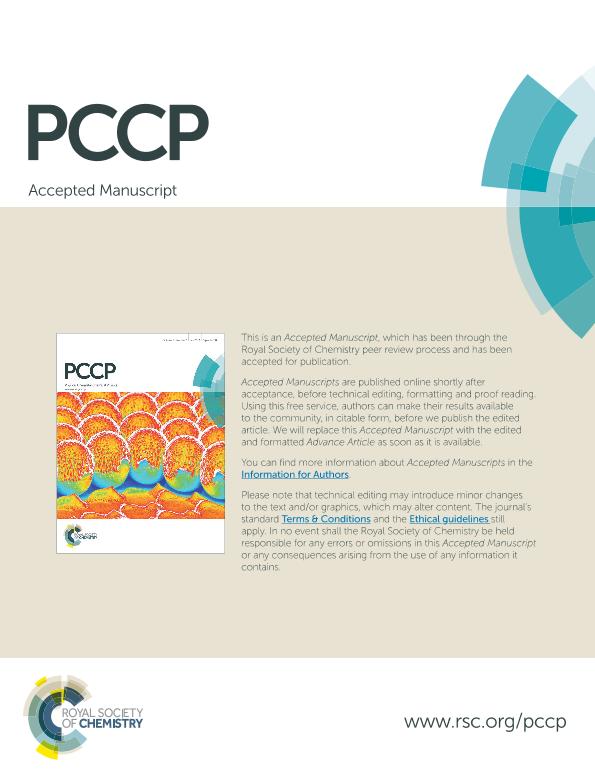Mostrar el registro sencillo del ítem
dc.contributor.author
Cobos, Carlos Jorge

dc.contributor.author
Hintzer, K.
dc.contributor.author
Sölter, L.
dc.contributor.author
Tellbach, E.
dc.contributor.author
Thaler, A.
dc.contributor.author
Troe, J.
dc.date.available
2019-08-06T19:55:32Z
dc.date.issued
2015-10
dc.identifier.citation
Cobos, Carlos Jorge; Hintzer, K.; Sölter, L.; Tellbach, E.; Thaler, A.; et al.; Shock wave study and theoretical modeling of the thermal decomposition of c-C4F8; Royal Society of Chemistry; Physical Chemistry Chemical Physics; 17; 48; 10-2015; 32219-32224
dc.identifier.issn
1463-9076
dc.identifier.uri
http://hdl.handle.net/11336/81022
dc.description.abstract
The thermal dissociation of octafluorocyclobutane, c-C4F8, was studied in shock waves over the range 1150-2300 K by recording UV absorption signals of CF2. It was found that the primary reaction nearly exclusively produces 2 C2F4 which afterwards decomposes to 4 CF2. A primary reaction leading to CF2 + C3F6 is not detected (an upper limit to the yield of the latter channel was found to be about 10 percent). The temperature range of earlier single pulse shock wave experiments was extended. The reaction was shown to be close to its high pressure limit. Combining high and low temperature results leads to a rate constant for the primary dissociation of k1 = 1015.97 exp(-310.5 kJ mol-1/RT) s-1 in the range 630-1330 K, over which k1 varies over nearly 14 orders of magnitude. Calculations of the energetics of the reaction pathway and the rate constants support the conclusions from the experiments. Also they shed light on the role of the 1,4-biradical CF2CF2CF2CF2 as an intermediate of the reaction.
dc.format
application/pdf
dc.language.iso
eng
dc.publisher
Royal Society of Chemistry

dc.rights
info:eu-repo/semantics/openAccess
dc.rights.uri
https://creativecommons.org/licenses/by/2.5/ar/
dc.subject
-
dc.subject.classification
Físico-Química, Ciencia de los Polímeros, Electroquímica

dc.subject.classification
Ciencias Químicas

dc.subject.classification
CIENCIAS NATURALES Y EXACTAS

dc.title
Shock wave study and theoretical modeling of the thermal decomposition of c-C4F8
dc.type
info:eu-repo/semantics/article
dc.type
info:ar-repo/semantics/artículo
dc.type
info:eu-repo/semantics/publishedVersion
dc.date.updated
2019-05-23T20:33:26Z
dc.journal.volume
17
dc.journal.number
48
dc.journal.pagination
32219-32224
dc.journal.pais
Reino Unido

dc.journal.ciudad
Cambridge
dc.description.fil
Fil: Cobos, Carlos Jorge. Consejo Nacional de Investigaciones Científicas y Técnicas. Centro Científico Tecnológico Conicet - La Plata. Instituto de Investigaciones Fisicoquímicas Teóricas y Aplicadas. Universidad Nacional de La Plata. Facultad de Ciencias Exactas. Instituto de Investigaciones Fisicoquímicas Teóricas y Aplicadas; Argentina
dc.description.fil
Fil: Hintzer, K.. Dyneon Gmbh; Alemania
dc.description.fil
Fil: Sölter, L.. Universität Göttingen; Alemania
dc.description.fil
Fil: Tellbach, E.. Universität Göttingen; Alemania
dc.description.fil
Fil: Thaler, A.. Dyneon Gmbh; Alemania
dc.description.fil
Fil: Troe, J.. Universität Göttingen; Alemania. Max-Planck-Institut fu¨r biophysikalische Chemie; Alemania
dc.journal.title
Physical Chemistry Chemical Physics

dc.relation.isreferencedin
info:eu-repo/semantics/reference/url/http://hdl.handle.net/11336/64002
dc.relation.alternativeid
info:eu-repo/semantics/altIdentifier/doi/http://dx.doi.org/10.1039/c5cp05366h
dc.relation.alternativeid
info:eu-repo/semantics/altIdentifier/url/https://pubs.rsc.org/en/content/articlelanding/2015/CP/C5CP05366H#!divAbstract
Archivos asociados
